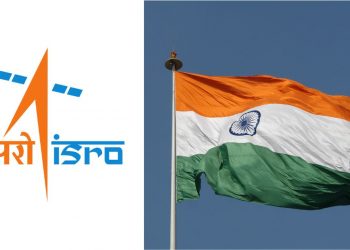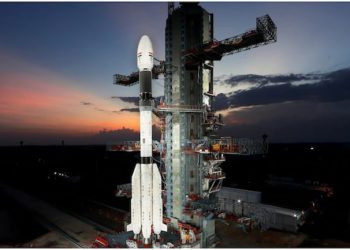India’s space agency successfully placed its heaviest communication satellite, CMS-03, into its intended orbit using the country’s powerful new-generation launch vehicle, LVM3-M5, popularly known as Bahubali. The mission marks another step forward in India’s growing self-reliance in satellite launches.
A Record-Setting Communication Satellite
The CMS-03 satellite weighs 4,410 kilograms and is designed to deliver multi-band communication services across a vast oceanic region covering the Indian subcontinent. It was precisely positioned in a Geosynchronous Transfer Orbit (GTO) and will serve as a replacement for the GSAT-7 series launched in 2013.
Indigenous Rocket Delivers a Perfect Launch
ISRO Chairman V. Narayanan confirmed that the LVM3-M5 rocket accurately deployed the satellite into its intended orbit. He referred to the LVM3 as Bahubali, highlighting its strength and heavy-lift capability. He also recalled that the same rocket family carried out the prestigious Chandrayaan-3 lunar mission, which made India the first nation to land near the Moon’s south pole.
All eight LVM3 missions, including developmental and operational flights, have achieved complete success. Narayanan described the CMS-03 mission as another proud moment for the nation and a shining example of Atmanirbhar Bharat or self-reliant India. Despite challenging weather, the ISRO team ensured a flawless launch.
From Dependence to Independence in Heavy Launches
Before this mission, India had relied on Arianespace’s launch facilities in French Guiana for deploying heavier satellites. The last such instance was in December 2018, when GSAT-11, weighing 5,854 kg, was launched aboard an Ariane-5 rocket.
With LVM3 now fully operational, India has achieved complete independence in launching communication satellites weighing up to 4,000 kilograms into GTO.
LVM3: India’s Heavy-Lift Launch Vehicle
The LVM3-M5 is a three-stage rocket equipped with two S200 solid boosters, a L110 liquid core stage, and a C25 cryogenic upper stage, all developed using indigenous technology. Scientists also refer to it as GSLV Mk-III, representing the most powerful launch vehicle in India’s fleet.
ISRO classifies its launch vehicles based on mission goals, orbit type, and payload capacity. The Polar Satellite Launch Vehicle (PSLV) handles lighter payloads up to 1,750 kg, while the Small Satellite Launch Vehicle (SSLV) supports payloads up to 500 kg in low Earth orbit. The GSLV carries payloads around 2,200 kg, and the LVM3 extends this to over 4,000 kg.
Ready for Future Human Spaceflight
The LVM3 is central to ISRO’s upcoming Gaganyaan mission, which will use a human-rated version called the HRLV (Human Rated Launch Vehicle). This version can carry 4,000 kg to GTO and 8,000 kg to low Earth orbit.
The rocket’s S200 boosters, developed at the Vikram Sarabhai Space Centre in Thiruvananthapuram, provide the lift-off thrust, while the L110 stage uses two Vikas engines designed at the Liquid Propulsion Systems Centre.
Building on Chandrayaan-3 Success
The LVM3’s previous mission was the launch of Chandrayaan-3, which made history in 2023 with a successful soft landing near the Moon’s south pole. The spacecraft weighed 3,841 kilograms, demonstrating the LVM3’s high reliability and performance.













Discussion about this post